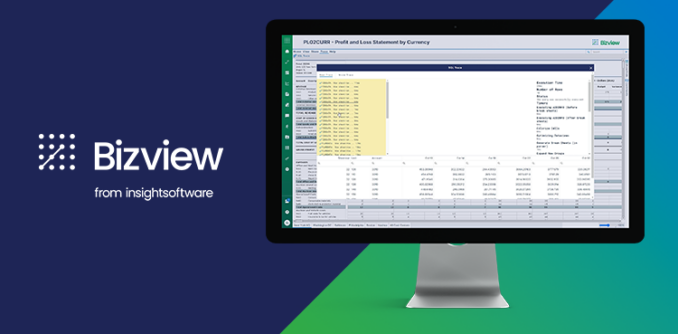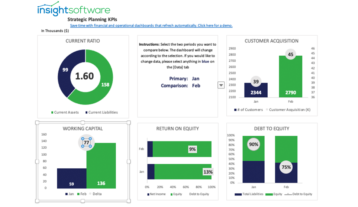The Four C’s of Financial Planning in 2021

If the world was fairly predictable, financial planning would be a relatively straightforward process. You are likely familiar with the traditional approach to budgeting, in which you adjust last year’s numbers upward by some fixed percentage, followed by a review process and perhaps some adjustments here and there.
But today’s world is far from predictable. As business leaders around the world have learned, major events can appear out of nowhere to drastically alter business conditions, demanding a level of agility and responsiveness above and beyond anything ever seen before. For many businesses, the idea of financial forecasting or planning based on last year’s numbers seems far less advisable than it was in the past.
Fortunately, there are some powerful tools available to make financial planning, forecasting, and budgeting processes significantly easier than they once were. The best financial planning and analysis (FP&A) software integrates with your enterprise resource planning (ERP) system, drawing real-time information about what’s happening in the business. It allows for communication and collaboration across multiple functions within the organization, enables continuous financial forecasting, and empowers business managers to see to the company’s ability to survive and thrive amid chaos.
Finance Plays a Pivotal Role
Decades ago, the finance department was viewed in many organizations as a collection of people whose job it was to tally the numbers and keep score for the business. Although that is still an important function, it’s only a small portion of what most modern finance departments actually do.
Finance is no longer just about processing information and spitting out reports; it’s about strategic guidance. If an agile business is analogous to a fighter jet, then finance is a combination of the dashboard and the pilot’s training and experience. Finance owns the accuracy of the information presented to management, but financial professionals are also there to interpret, advise, and help the rest of the C-suite grasp the implications of that information.
As owners of FP&A processes, today’s accounting teams must be well-versed in the four C’s of financial planning: context, collaboration, continuity, and communication. Today, financial planning and budgeting are more important than ever. By keeping these four disciplines in mind, finance teams can ensure that their strategic value is clearly understood and appreciated throughout the organization, including in the C-suite.
The Value of Context in Financial Planning
The interpretation of financial results is highly dependent on context. Imagine you are running a chain of restaurants, and your dine-in revenue suddenly drops 80 percent below your financial forecast. There’s also some good news, though; take-out sales have skyrocketed. If you already guessed the context here, you’re probably not alone. This is precisely the situation in which most restaurateurs found themselves at the start of the second quarter of 2020.
While the contextual importance of that example might be painfully obvious, there are plenty of cases that illustrate how context operates at a much more subtle level. What does it mean when the sales of one of your key product lines does poorly, despite having fairly healthy margins? Was there a drop in market demand, or perhaps a sharp fluctuation in foreign currency exchange rates? Did a change in sales personnel or marketing processes precipitate a sharp drop off in the pipeline? Or were company resources diverted elsewhere, resulting in lower sales of the product in question?
All of these questions underscore the importance of context when interpreting the numbers. FP&A processes must be built with a clear understanding that the numbers are just one piece of the picture, albeit a very important one. The broader context in which those numbers play out is essential.
Collaboration Improves Financial Forecasting and Planning
The events of the past year have underscored the critical importance of agility and responsiveness. That has led many executives to consider alternative approaches to financial forecasting and planning, including driver-based budgeting, continuous forecasting, rolling forecasts, and zero-based budgeting. To be effective, those approaches require cross-functional participation from stakeholders throughout the organization.
The best FP&A tools facilitate that kind of collaboration, enabling comments, trackable changes, version control, and the exploration of multiple “what if” scenarios. If your organization is still using spreadsheets for planning and budgeting, you’ll have to resort to emailing copies from one user to another, hoping that multiple users don’t overwrite each other’s changes in different versions of the same file. Good FP&A tools with robust collaboration features eliminate that problem. Perhaps more importantly, they allow the finance team to operate effectively in their role as orchestrator of FP&A processes.
Continuity Is Key to Accurate Financial Planning
In the context of FP&A, continuity is about having a constant stream of accurate, up-to-date financial information. It’s about making information available in near-real time so that business leaders have the insights they need to make decisions based on the latest data. When the world around you is changing rapidly, the companies that can adapt quickly will gain a clear advantage over those that cannot.
When you build financial plans on collections of disconnected spreadsheets with no live links to the current information in your ERP system, decision-makers are blind to what’s happening in the business. When the finance department takes a proactive approach to optimize the flow of information, important insights are available when they are needed most.
Communication Seals the Deal for Financial Planning and Budgeting
Ultimately, FP&A experts in the finance department are in a unique position to communicate the meaning that surrounds the numbers. That may involve modeling various scenarios, including best case, worst case, and likely-case scenarios so that executives have a deeper understanding of the road ahead. It may also include recommending trigger points for key business decisions based on those scenarios, or advice on potential responses to adverse situations. Finance is in a unique position to interpret the numbers, bringing context, collaboration, and continuity together, and then communicating that to the C-suite leaders who rely upon it to make sound decisions.
If your organization wants to take FP&A processes to the next level, insightsoftware can help. As a leader in financial planning, budgeting, and reporting, we develop software that helps companies automate and streamline processes, with near-real-time integration to over 140 different ERP systems. To learn more about how the right FP&A software can help your business, download our guide:










